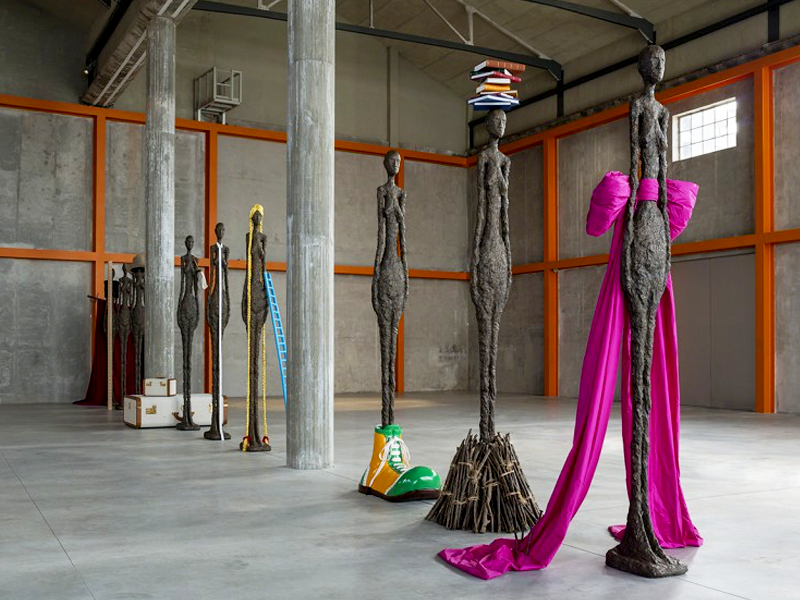
From Education to Entering Global Markets: What IT Sector, Cultural and Creative Industries need to work?
“Only a handful of professional sectors will survive,” Williams emphasised during the roundtable Development of Creative Industries in the Modern Technology World: From the Point of View of Culture, Education and Economic Prospects, “I am talking about IT industry specialists, and people involved in the cultural and creative sectors.”
“It is this cooperation that provides new jobs and expands horizons,” says his colleague Andrea Viktorin, head of the EU Representative Office in Belarus, stressing that the future lies in modern technologies in combination with cultural and creative potential. “In today’s globalised world, you can no longer work in a small box… We need to enter a transborder context that promotes the development of networks, finding new markets and the growth of a country’s image.”
In her study The Potential of the Creative Industries Development for the Economy of Belarus, Cristina Farinha, an expert from Portugal, said that there are opportunities in Belarus for the development of the IT sector. Nevertheless, she pointed to the dissociation between the creative and digital industries as a challenge in the Belarusian environment. “I see a lack of official recognition of the creative sector. State policy relies on a more traditional model of support for culture.” Moreover, the weakness of civil society also impedes the development of the economy. “You have many great initiatives to make Portugal envious, such as Budzma Belarusami! And Mova Nanova, but why not talk about your creative community in the same spirit?” says the expert. She also noted the need to build communication channels between the formal and informal sectors, and the importance of including local expertise in the international community.
The first session of the roundtable Interaction Between Culture and Technologies: Prospects and Challenges was opened by Andrew Erksine, an expert at the Tom Fleming Creative Consultancy, UK, by him talking about brilliant projects that use interdisciplinary approaches. He outlined the main issues that are relevant for such cooperation between culture and technologies. “How to ensure the use of new business models in cultural organisations? How to implement them? And how to choose ideas that can be transformed in the future and enable us to reach a new level?”
Lidia Lobanova, head of educational and inter-museum projects at the Polytechnic Museum (Russia), in turn, contextualised the problem of accessibility to technological innovations. “In an attempt to create a brilliant project, the authors are tempted to forget about the visitor,” she says. “At the moment, this is one of the main challenges: how to create a project focusing on the audience instead of working as a technological project for the sake of a technological project?”
Jill Cousins, head of the Europeana project (the Netherlands), stressed the importance of the accessibility of cultural heritage offered by digital technologies. “In our project, libraries, museums and galleries of Europe are integrated… 54 million different locations. And the more open that cultural institutions are to providing data, the more they stand to win. We offer people new ways to look at the materials that bring them into museums.”
Alla Stashkevich, an expert at the Institute of Culture of Belarus, noted the problems relating to the availability of an open digital archive in Belarus. “The bank of data of historical and cultural heritage is closed for society, the Museum Collections Fund does not meet the standards. Unfortunately, the weak technical base doesn’t help the development of the digital environment in this area either.”
Arek Keshishian, a teacher at the TUMO Centre for Creative Technologies (Armenia), outlined the main priorities of his organisation at the second session of The Development of Creative and Technical Skills and Competencies roundtable. “Before taking classes with teachers at TUMO, a child goes through an important stage of self-education, which allows him to determine the areas of interest for him.”
The development of leadership skills in children is also a priority at the TeenGuru academy for teens (Belarus). Its head Nadezhda Putyata said, “Between 12 and 17, children want to succeed, carry out their own projects, invent, and we want to preserve this entrepreneurial spirit in them.”
Valentina Chekan, head of the IT Princess Academy (Belarus), in turn, pointed to the lack of technical education for girls. Her educational initiative is designed to fill this gap by “turning the acquired artistic skills of girls into a technical state”. “It was also important for us to include in our curriculum everything related to the development of soft skills: courses on critical thinking, creativity, web security… Understanding the social significance of the work of a designer, developer, psychological aspects allowing for the development of social empathy… we also have tried to take these aspects into account.”
“At the level of individual educational initiatives, the problem of developing creative and technical skill has been solved,” Elena Mechenko, director of the Edu4future Association (Belarus), adds to elaborate on the problem, “But what do you do on the national level? We have a huge classical education system that takes little account of the demands of the times. And the worst part is that because of this system, the young generations lack the feeling of being able to choose.”
“11.4% of all companies in Estonia is engaged in the cultural and creative industries,” said Ragnar Siil, creative industries expert of the Culture and Creativity Programme, opening the third session of the Ecosystem for the Development of the Creative Economy roundtable. “People today are looking for emotional experiences, impressions, they are willing to pay for the intangible aspects of culture, that’s why now is the time for great opportunities for the creative industries,” emphasised the speaker, “We need to create the conditions for the development of many initiatives.”
“Under the roof of our Business Incubator, 150 entrepreneurs operate,” says Ryma Epur, director of a Belarusian youth project (Minsk, Belarus). “If you learn not to place obstacles, you can always find a solution.”
“There are three phases in the adoption of a system: denial, awareness and the time you begin to use this system,” says Martin Aadamsoo, general director of the creative media incubator Digix.eu (Tallinn, Estonia). “This principle works with regard to the creative industries too. In the beginning, old women are shouting at exhibitions, then attitudes changes towards contemporary art. The first stage is particularly painful, but you have to go through it. It is also important to remember that when engaged in the creative business, you shouldn’t forget about the business part.”
Viktor Babariko, director of Belgazprombank, expressed his position in the following way: “As long as people are thinking on a local scale, there will be no progress. What we need today is to understand that any project should have its place in the global environment.” “To establish creative industry, we must focus on its core.” “We have no problem finding the resources, it’s ideas and leaders that are in short supply.”




